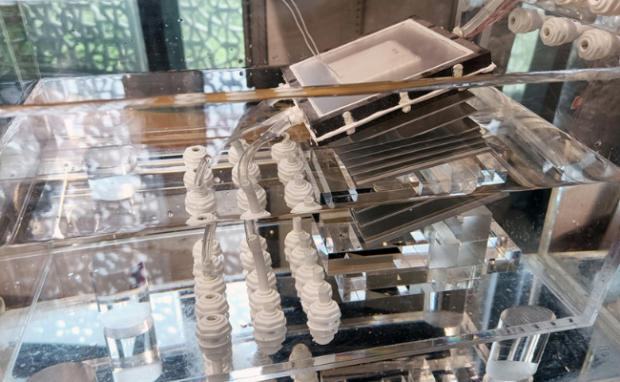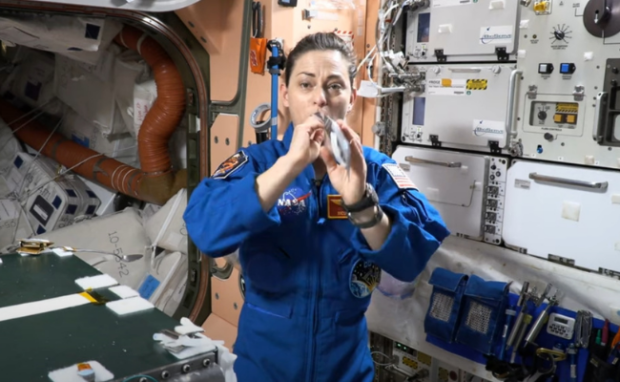Desalination device less than the cost of tap water
MIT researchers created a desalination device that can make seawater drinkable for less than the cost of tap water. The unique design enables it to create potable water using solar energy without accumulating salt for several years. As a result, lead researcher Lenan Zhang said it opens possibilities for real-life applications.
Water covers the Earth, but most of it isn’t drinkable. We can purify and desalinate water, but modern methods are too expensive and inefficient. That is why researchers are scrambling to find effective alternatives to make water safe. Fortunately, more experts like those from the Massachusetts Institute of Technology discovered promising methods.
This article will discuss how the MIT desalination device works. Later, I will discuss other projects focused on purifying or extracting water from unusual sources.
How does the desalination device work?

MIT graduate student Lenan Zhang and his team have been developing this desalination device since last year. However, past designs accumulated salt in its filtration system, so users must replace parts frequently.
Another solved the salt problem but collected less water than the previous design. Consequently, they continued their research until they made one that took advantage of thermohaline.
The phenomenon that drives water movement worldwide with temperature and salt content. “When seawater is exposed to air, sunlight drives water to evaporate,” Zhang explained.
“Once water leaves the surface, salt remains. And the higher the salt concentration, the denser the liquid, and this heavier water wants to flow downward,” he added. “By mimicking this kilometer-wide phenomenon in a small box, we can take advantage of this feature to reject salt.” Here’s how it works:
You may also like: Apple Vision Pro delayed due to design issues
- The team created layers or stages containing evaporators and condensers and arranged them into a box shape.
- Next, they set the box at a tilt within a larger, empty vessel.
- The researchers attached a tube from the top half of the box down through the bottom of the container.
- Then, they made the vessel float in saltwater.
- Water floss through the top half, where an evaporator uses solar energy to heat water into vapor.
- Next, the water vapor funnels to the bottom half of the box, where a condensing layer air-cools the vapor into pure potable liquid.
Zhong and his team calculated that enlarging the layers to a square meter would produce 5 liters of water per hour. Also, the desalination machine would not accumulate salt for several years.
As a result, it could become a cheaper alternative than producing tap water in the United States. Zhong said. “This opens up the possibility for solar desalination to address real-world problems.”
What are the other water production projects?

University of Texas researchers also made another device that produces drinkable water. However, it derives the liquid from warm air!
“With our new hydrogel, we’re not just pulling water out of thin air,” said Cockrell School of Engineering professor Guihua Yu.
“We’re doing it extremely fast and without consuming too much energy. What’s really fascinating about our hydrogel is how it releases water.”
“Think about a hot Texas summer. We could just use our temperatures’ natural ups and downs. No need to crank up any heaters,” he added. Consequently, people in areas with excess heat could place the device outdoors to produce water automatically.
“By transforming the hydrogel into micro-sized particles, we can make the water capture and release ultrafast,” said Weixin Guan, a graduate student in Yu’s lab and one of the research leaders. “This offers a new, highly efficient type of sorbents that can significantly enhance the water production by multiple daily cycling.”
You may also like: Mexico uses solar energy to clean canals
NASA has been creating life support systems that recycle waste into useful materials. Its latest invention is the Environmental Control and Life Support System. Here’s how it works:
- The ECLSS Water Recovery System collects wastewater and sends it to the Water Processor Assembly (WPA).
- Then, the WPA produces potable water.
- Another specialized component uses advanced dehumidifiers to capture crew sweat and breath moisture. Meanwhile, the Urine Processor
- Assembly (UPA) takes water from urine using vacuum distillation.
- Afterward, the Brine Processor Assembly extracts more water from UPA urine brine.
“This is a very important step forward in the evolution of life support systems. Let’s say you collect 100 pounds of water at the station. You lose two pounds of that, and the other 98% just keeps going around and around. Keeping that running is a pretty awesome achievement,” said Christopher Brown, a Johnson Space Center life support system manager.
Conclusion
MIT researchers created a desalination device that uses solar energy. Also, it could function for many years without maintenance if scaled up to a square meter.
As a result, it could produce clean potable water for less money than making tap water in the US. However, the machine may require more research and development for practical applications.
Gain more information about the desalination project at the MIT News website. Moreover, check the latest digital tips and trends at Inquirer Tech.